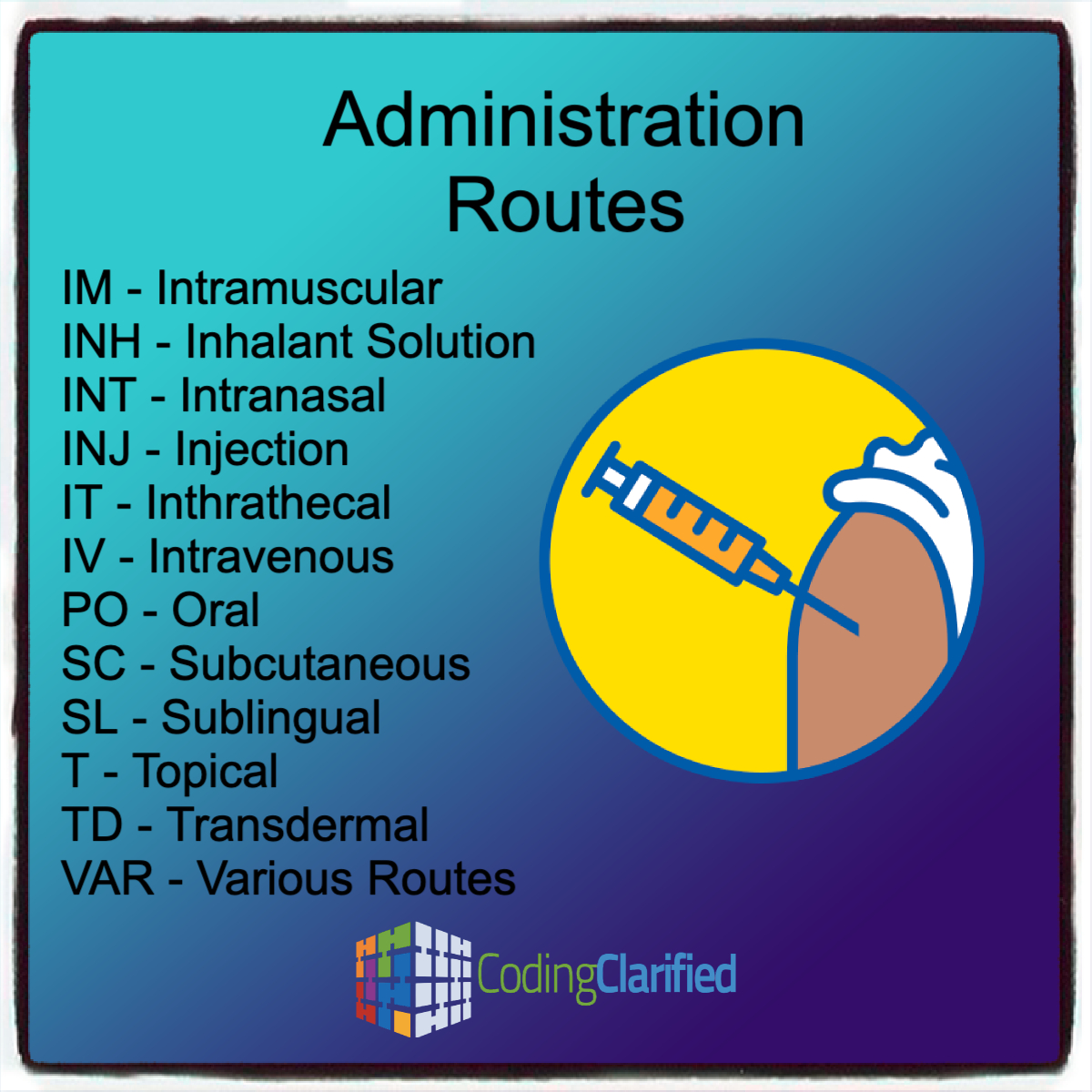Understanding Routes of Administration for Medicines in Medical Coding
When it comes to medical coding, understanding the various routes of administration for medicines is crucial. Each route can significantly impact patient care, medication efficacy, and billing processes. This article explores the primary routes of administration, their coding implications, and the importance of accurate documentation.
What are the Routes of Administration?
Routes of administration refer to the path by which a drug or vaccine is delivered to the body. The choice of route can influence the drug’s absorption, distribution, metabolism, and excretion, which ultimately affects therapeutic outcomes. Here are the most common routes:
1. Oral (PO)
- Description: Medications are taken by mouth and absorbed through the digestive tract.
- Examples: Tablets, capsules, syrups.
- Coding Considerations: Commonly coded using the HCPCS Level II codes for medications. Accurate documentation of dosage and frequency is essential.
2. Sublingual (SL)
- Description: Drugs placed under the tongue for rapid absorption.
- Examples: Nitroglycerin tablets.
- Coding Considerations: Requires specific codes that indicate the sublingual route.
3. Topical (T)
- Description: Medications are applied directly to the skin or mucous membranes.
- Examples: Creams, ointments, patches.
- Coding Considerations: Must document the specific application site, as certain codes differentiate between various topical applications.
4. Inhalation (INH)
- Description: Medications are delivered through the respiratory tract.
- Examples: Inhalers, and nebulizers.
- Coding Considerations: Inhalation therapies often have specific codes; documenting the device used is critical for accurate billing.
5. Intravenous (IV)
- Description: Medications are delivered directly into the bloodstream.
- Examples: IV fluids, chemotherapy.
- Coding Considerations: Requires careful documentation of infusion times, rates, and any adverse reactions.
6. Intramuscular (IM)
- Description: Drugs injected into a muscle.
- Examples: Vaccines, and hormonal therapies.
- Coding Considerations: Codes vary based on the type of injection and any combination with other services.
7. Subcutaneous (SC)
- Description: Medications are injected into the tissue layer between the skin and muscle.
- Examples: Insulin, and anticoagulants.
- Coding Considerations: Similar to IM, requires specific codes based on the substance and administration details.
8. Transdermal (TD)
- Description: Drugs are delivered through the skin via patches.
- Examples: Nicotine patches, and hormone patches.
- Coding Considerations: Important to note the duration of use and specific patch type.
9. Intranasal (IN)
- Description: Medications are administered through the nasal passages.
- Examples: Nasal sprays.
- Coding Considerations: Must document the exact drug and dosage, as well as the reason for administration.
Importance of Accurate Documentation
In medical coding, precise documentation of the route of administration is essential for several reasons:
- Billing Accuracy: Different routes may have different associated codes, impacting reimbursement rates.
- Patient Safety: Accurate documentation helps prevent medication errors, ensuring the right drug is administered correctly.
- Clinical Data: Detailed records contribute to a better understanding of treatment efficacy and patient outcomes.
Understanding the various routes of administration for medicines is crucial for accurate medical coding. Proper coding not only affects billing but also plays a significant role in patient safety and quality of care. Accurate documentation of the route, dosage, and frequency ensures that healthcare providers are reimbursed appropriately and that patients receive the best possible treatment. As the landscape of healthcare continues to evolve, staying informed about coding practices and medication administration methods will remain a vital skill for medical coders.

